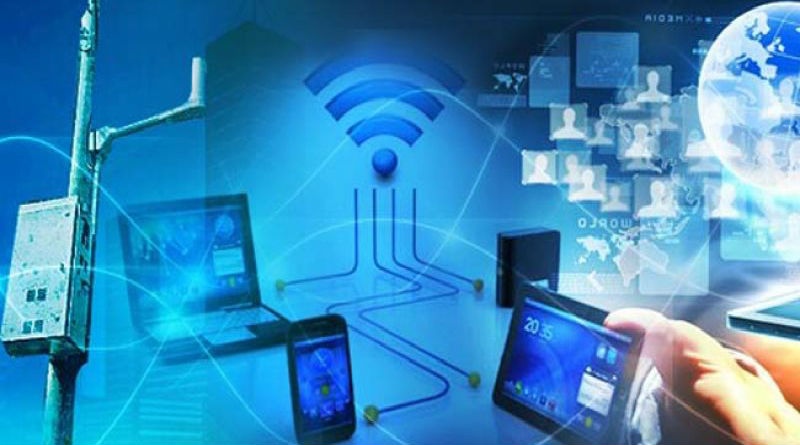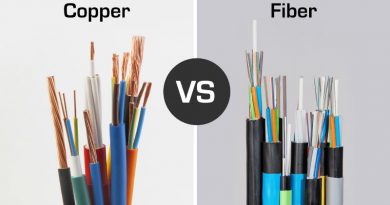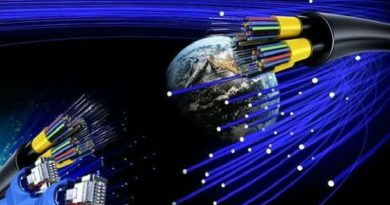What is Broadband Connection and how does it Work
Broadband is a wide-band transmission of data, but when it comes to the Internet, Broadband is often referred to as high-speed Internet. It is known to be much faster than dial-up connectivity to conventional analog and even ISDN networks (Integrated Services Digital Network). The various media of the broadband connection link may be coaxial cable, optical fiber, radio, or a twisted pair.
Broadband is one of the fastest internet connections available to your home or office. Broadband service providers today deliver a wide range of services to their customers with only high-speed Internet connectivity. They deliver streaming media files, voice over internet protocol, online gaming, data sharing, etc. Broadband services from Internet service providers consumers to upload vast files and data that cannot be accessed via dial-up service.
Broadband is a high-speed Internet connection that helps you to experience all the internet has to offer.
Until broadband, Internet access was accomplished by ‘narrowband’ dial-up links, which were very slow to meet today’s expectations. Broadband is much easier and helps us to do more on the Internet.
How fast is broadband?
What makes the connection fast enough to be called “broadband” There is no standard definition and what is defined as a broadband service varies around the world.
In India, we have access to a wide variety of facilities with various standards of efficiency. Nearly every home and business should have access to a fixed-line connection of at least 2Mbps (megabits per second), but most of them can have speeds of more than 24Mbps.
How does broadband work?
The Internet Service Provider (ISP) provides the software and equipment needed to get your home or company online. Some ISPs run their networks, but this is a complicated and expensive undertaking, making the majority of them to pay for wholesale access to a network that they can then resell.
Many of the home broadband services you’ll find on Broadband Genie come to your home via a fixed line, which is likely to be either an Openreach (BT) telephone line or a Virgin Media network link.
Broadband access, however, does not always include a grid. Digital access is also available via cell phone networks, satellite internet linking to remote relays, and wireless broadband services use long-range Wi-Fi.
Broadband is a form of internet link that is always active since the infrastructure of broadband internet access is still linked and does not obstruct telephone lines. Another benefit is that home broadband users can connect to the Internet instantly and do not need to reconnect to the network.
The Broadband service operates through various forms of connections. There are optical subscriber lines (DSL), cable, fiber optic, and satellite connections.
DSL: The DSL or wireless subscriber line is an internet connection that does not cause your phone line to be disrupted. Nevertheless, the speed of the internet via the DSL would depend on the distance from your home or office to the switching point. Through the gap, the lower the pace. As a consequence, cable connections are still considered before the DSL.
The DSL (or Wireless Subscriber Line) internet service allows its connection by using redundant telephone wires that do not cause any disruption to your telephone service. The pace you experience with a DSL connection varies with the distance from the switching station. Your speed would be slower the farther away you are and faster the closer you are to the switching station, and that could be a deciding factor when you try to choose between a DSL line and a cable link.
Cable: This form of broadband link is offered by the local cable service provider. The main downside of this type of connection is that it relies on the number of users using the service at the same time. Users in the same region share the bandwidth of the network, which decreases the speed of the internet. During peak hours, as people return home in the evening, many of them will have access to the internet. This is when the speed of the broadband link dives.
The broadband cable connection is provided by the local cable service provider. In this case, the speed of cable Internet connections varies with the number of users on the service at a specific point in time. Given a specific geographic area, users of the broadband cable service share the bandwidth of the connection, which slows down the speed of the number of users on the system. This will occur at peak times, for example, late in the evenings after the day of work is over, when many people will have access to the Internet. Somewhat misleadingly, the cable company would often estimate the speed of the connection based on the belief that you are using the service. But this is not the case.
Fiber-Optic: fiber-optical broadband access is the newest and fastest internet service to date. The cost of this type of link is also very fair as opposed to DSL and cable, considering the speed of the internet. However, there is an increasing broadband link with very few coverage areas. It will take some time for the fiber optic links to be established at all locations.
The newest internet infrastructure is fiber optic, which is the fastest Internet access to date. Nevertheless, this form of Internet service is still in its infancy, as its coverage areas are very small and the construction of the fiber optic cable takes a while to complete. Where available, the cost not only competes with that of DSL and cable, but provides a much quicker link than any of these services.
Satellite: Satellite is considered to be the slowest broadband internet service available. It is cheaper than dial-ups and convenient for people living in rural areas. The installation charges for a satellite link can be very high, but the maintenance charges are the same as the DSL and cable charges.
The cost of the Broadband service is higher than the dial-up service, but with the speed at which it works, broadband internet services are highly regarded. Broadband service providers make it possible for you to get high-speed broadband so that you can be continuously connected to the web without any interruption.
The last and slowest broadband service is offered via satellite. While this is a decent substitute for dial-ups for people living in remote rural areas, deployment costs are very high, but continuing monthly rates are affordable for both cable and DSL.
There are also benefits of both DSL and cable broadband. It offers more bandwidth than other types of Internet connectivity, making it easier for a computer user to multitask multiple applications in the background when browsing the web. You can browse the web while listening to audio.
In-house computer networking is made simpler by using either wireless or wired modems with a broadband connection.
The cost of broadband service is higher annually than the cheaper dial-up alternative by Rs 6000 to Rs 30000, but considering the benefits and ease of broadband connectivity, the expense is well worth it.
A broadband connection enables you to play a variety of popular computer games that rely on fast Internet connections.
Broadband access, unlike the old dial-up internet service, does not activate the phone line while it is in use. Having a broadband connection makes it possible for you to access an Internet telephone service so that you no longer need a conventional telephone line at all.
Another big advantage of broadband is that you are always linked to the Internet. In a matter of seconds, you can easily connect to your work intranet and email.
Many people considering such broadband Internet service choices usually limit the search to the most common DSL and cable services. A good way to discuss your choices will be to ask people in the region you are considering which service they are using and how it works for them.
However though cable broadband Internet service provides a fast internet link, this speed will not be realized if the network itself cannot be relied on. For example, the cable link you receive depends on the shared bandwidth, the number of users on the channel at any time, and the network latency.
Like the old dial-up service, you will not be dialing a particular phone number to access the Internet. For a broadband connection, you can access the Web by simply double clicking on the Internet browser icon of your choosing (usually on your desktop-Internet Explorer, Chrome, Netscape, etc.); your default web page will open and you can start browsing the web instantly. The whole cycle will take no longer than 10 to 15 seconds, depending on the speed of the machine itself and any issues of slowness.
What can I do with broadband internet?
Broadband can give you access to everything you can find on the internet. You’ll be able to send and receive messages, browse the internet, use social networks, watch and listen to movies, television, music, and radio, do online banking, and a lot more.
How do I get broadband?
To get broadband, you must first test what providers and the form of broadband are at your home.
Then you can compare rates and offers right here on Broadband Genie before you pick a provider and sign up.
Once you click on a provider through Broadband Genie, you will be brought through the process of joining, which will include having the necessary information and paying any up-front fees. Remember that for most of the top ISPs, a credit check is also needed.
The ISP must arrange for the service to be allowed (including a visit by the technician, if work is required) and to post the broadband router and any other equipment. On the day that your broadband is allowed, you simply need to power up the router and link it to broadband, and then you’re ready to start using high-speed internet in your home.
How do I compare broadband?
There’s a wide variety of broadband packages out there, but don’t worry-Broadband Genie’s job is to direct you through them and make a great deal for you. Here’s what you need to look for when you compare deals.
Price: It typically consists of a one-off installation fee (although free setup broadband is available) followed by a monthly charge. Often the monthly charge can be discounted for a defined period.
Speed: One of the most popular broadband selling pitches is pace: generally speaking, as speed increases, so does the price. Nearly all will be able to access regular. Yet this is very sluggish by modern standards, and most of us will be able to get some kind of fiber optic broadband that can deliver much faster speeds.
Data limit: Most broadband packages are unrestricted, but even the cheapest Wi-Fi broadband provider have a monthly limit. Not sure what you’re going to get? Our unlimited broadband guide will point you in the right direction.
Extras: Extras can include free routers and anti-virus apps, as well as gifts such as shopping vouchers and gadgets. Often it’s necessary, or just offer a nice little bonus to the contract.
I already have broadband; how can I check my speed?
If you already have a broadband internet connection and are concerned about the speed of your link, you can verify it with our broadband speed test. We suggest that you turn off or disconnect all other devices, link to the router with a network cable (or, if that is not possible, sit right next to it to ensure that your Wi-Fi signal is very strong), and run a variety of tests at various periods of the day during the week.
My broadband isn’t working, what can I do to fix it?
If you’re trying to troubleshoot your broadband link, you’ve come to the right spot! If you’re having problems with your wireless link, head over to our wireless set-up guide for further support.
How do I get a broadband internet connection?
Please contact Jasnet today about our high-speed internet service and fiber internet network expansion to see what speeds are available in your area.




